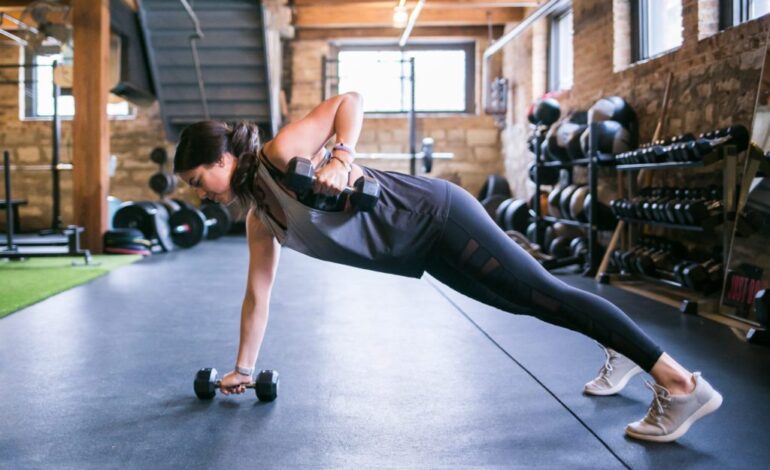How to Build a Sustainable Fitness Routine

Creating a fitness routine that lasts requires more than just motivation—it demands balance, consistency, and personalization. Many people start strong but struggle to maintain their routines due to unrealistic goals or lack of structure. A sustainable fitness routine, however, not only improves physical health but also becomes a long-term lifestyle habit.
Why Sustainability in Fitness Matters
Sustainability ensures that your fitness routine fits seamlessly into your life without causing burnout or injury. When a routine is sustainable, it’s enjoyable, adaptable, and helps you achieve steady progress over time.
Key Components of a Sustainable Fitness Routine
Set Realistic Goals
Define clear, achievable goals based on your fitness level and lifestyle. Whether it’s losing weight, gaining muscle, or improving endurance, your goals should be specific, measurable, attainable, relevant, and time-bound (SMART).
Find Activities You Enjoy
Choose exercises that you genuinely enjoy, whether it’s swimming, hiking, yoga, or dancing. Enjoyable activities are more likely to keep you engaged and motivated.
Start Small and Progress Gradually
Avoid jumping into intense workouts if you’re a beginner. Start with manageable sessions, such as a 15-minute walk or light stretching, and gradually increase intensity and duration as your fitness improves.
Mix It Up
Incorporate a variety of exercises to target different muscle groups and prevent boredom. A well-rounded routine includes:
- Cardio: For heart health and calorie burning.
- Strength Training: To build muscle and improve bone density.
- Flexibility and Mobility: For better posture and reduced risk of injury.
Create a Schedule
Plan your workouts at consistent times, whether in the morning, during lunch, or after work. A regular schedule makes fitness a natural part of your day.
Listen to Your Body
Pay attention to how your body feels during and after workouts. Rest days are just as important as exercise days, allowing your muscles to recover and prevent overtraining.
Track Your Progress
Keep a fitness journal or use apps to monitor your achievements. Tracking helps you identify improvements and adjust your routine as needed.
Make It Social
Working out with friends or joining a fitness community can make exercise more enjoyable and keep you accountable. Group classes or fitness challenges can also provide motivation.
Overcoming Common Challenges
Lack of Time
Incorporate short, high-intensity interval training (HIIT) sessions or quick workouts that fit into a busy schedule. Even 10 minutes can make a difference when done consistently.
Plateaus
If progress stalls, switch up your routine by adding new exercises or increasing intensity. Challenging your body in new ways prevents adaptation and keeps results coming.
Motivation Slumps
Focus on non-scale victories, such as improved energy, better sleep, or increased strength, to stay inspired. Celebrate small milestones to maintain enthusiasm.
Nutrition: A Key Part of Fitness Sustainability
A balanced diet fuels your workouts and aids recovery. Focus on whole, nutrient-dense foods, and ensure you’re consuming enough protein, healthy fats, and carbohydrates to meet your energy needs. Stay hydrated and consider meal prepping to simplify healthy eating.
Sample Weekly Fitness Routine
Monday: 30 minutes of moderate cardio (e.g., brisk walking or cycling).
Tuesday: 20 minutes of strength training focusing on upper body.
Wednesday: Yoga or Pilates for flexibility and mindfulness.
Thursday: 15 minutes of HIIT.
Friday: Strength training focusing on lower body.
Saturday: Outdoor activity like hiking or swimming.
Sunday: Rest or light stretching.
Benefits of a Sustainable Fitness Routine
By creating a routine that’s easy to maintain, you’ll enjoy benefits such as:
- Increased energy and improved mood.
- Reduced risk of chronic diseases.
- Enhanced muscle strength and endurance.
- Better sleep and stress management.
A sustainable fitness routine doesn’t require drastic changes—it’s about finding balance and consistency. Start small, stay patient, and watch as fitness becomes a natural and enjoyable part of your life.







